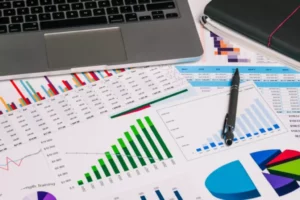Asset retirement is the removal from a company’s journal by selling or decommissioning it. These are long-term assets that have contributed to carrying out a profit, such as a company’s machinery, technology, or vehicles. Business tracks asset disposals as equipment and property represent significant capital investments, and understanding the disposals’ value can help a company maintain accurate accounting records.
Assets are disposed of when they are:
- fully depreciated and subject to liquidation.
- being sold because it is no longer valid or needed.
- must be excluded from accounting due to unforeseen circumstances (theft, etc.).
It is accounted for by eliminating the asset cost and any accumulated depreciation and impairment loss and recognizing any cash receipts and resulting gain or loss.
Asset Liquidation Value
Liquidation value is the residual asset value. Company proceeds by holding assets until they have exhausted their usefulness. Sometimes they have financial value. When a company makes asset disposals, it records the liquidation value on its financial statements and in a journal. Let’s study two methods of determining residual value.
Rectilinear Method of AD Determining
Liquidation value is what a company expects to receive when equipment is sold or disposed of. It is a formula for calculating asset depreciation (AD):
AD = (asset original cost – salvage value) / asset life
To determine the remaining asset value multiply the depreciation amount by the years of the asset’s useful life. Then subtract the accumulated depreciation from the original asset cost:
AD = asset historical cost – (asset devaluation * service years number)
This is the residual asset value, otherwise known as its salvage value.
Double Declining Balance Method of Determining
To determine salvage calculate the depreciation rate using the formula:
Depreciation rate = (1 / asset useful life) * 2
Then find the annual asset depreciation using the formula:
Annual depreciation = asset value at the period beginning * depreciation rate
Subtract the annual depreciation amount from the initial asset cost:
Accumulated depreciation = asset value at the period beginning – annual depreciation
Repeat these steps until the asset reaches salvage value or fully depreciates.
How to Record the Asset Disposals
Below are several examples of how companies manage and record assets in their balance sheets: at the end of useful life, in case of unforeseen circumstances, and assets retirement.
Assets Sale at the End of Useful Life
A company that produces finished cabinets has a machine for making cabinet doors. This machine costs $17,000 and has a five-year lifespan. The owner sells the device to a scrap metal recycling company and records an entry to the depreciation account and an equipment account. Debit and Credit will be the same $17,000.
Unforeseen Circumstances
The bakery purchased the oven for $6,000. The asset’s useful life is ten years, and the salvage value is $1,000 at the end of its useful life. After four years, someone stole the oven. The accountant calculates the salvage value of the oven.
- Fixed Asset Depreciation = (6000 – 1000)/10 = 500
- Accumulated Depreciation = 500 * 4 = 2000
- Salvage Value = 6000 – 2000 = 4000
They fix the salvage value of the stolen oven at $4000. This amount is recorded on the financial statement as a Debit to the bakery’s theft expense account and a Credit to the machinery account.
Maintenance Costs, Asset Retirement
The company purchased the lift platform for $75,000. The estimated useful life was ten years, and the salvage value was $5,000. After 8 years, the platform broke down. The repair cost is $25,000. The company calculated the platform cost to determine if it exceeded the repair cost:
- Depreciation rate = (1/10) * 2 = 0.2
- Annual Depreciation for the first year = 75,000 * 0.2 = 15000
- Accumulated Depreciation for the first year = 75000 – 15000 = 60000
- Year 2 annual depreciation = 60000 * 0.2 = 12000
- Accumulated Depreciation for the second year = 60000 – 12000 = 48000
- Accumulated Depreciation for the eighth year = 15728.64 – 3145.728 = 12582.912
So, the platform value is $12582.91. The repair cost exceeds the current price, and the company sells the car to a repair shop. Tenant records transaction as a Credit to the equipment account and a Debit to its cash account.


















